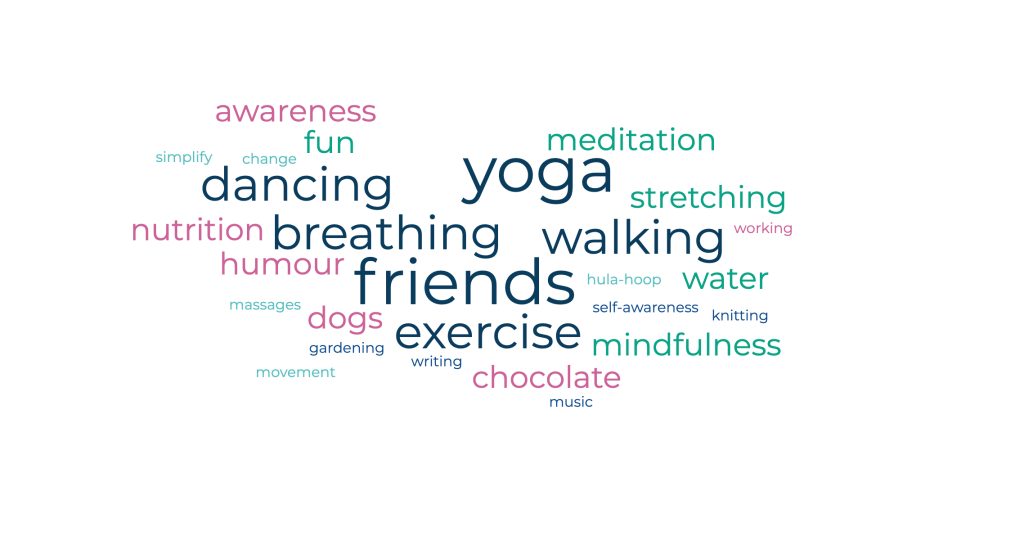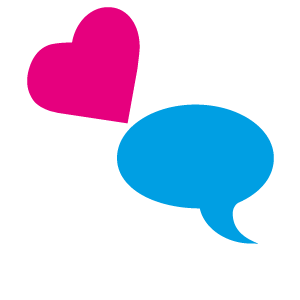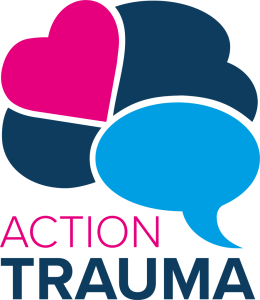Permission to Pause: Self-care toolkits for mental health and trauma professionals

Permission to Pause: Self-care toolkits for mental health and trauma professionals
29th November 2022 was no ordinary Tuesday for the Action Trauma Network, as this was the day we held our first ever in-person networking event. We live in turbulent times of great uncertainty and stress, so it was clear that our theme for this event needed to be ‘self care’.
Our membership is comprised of people who either work directly with trauma, care for or support traumatised people, or value a trauma-informed approach to their work in supporting or serving people and communities. We designed this event to allow an important chance for social connection, focused around practical activities and exercises.
This blog has been designed to give you a taster of the activities so you can start building your own self-care toolkit.
Exploring the why and how: conversation / journalling exercise
This is a great exercise to try with staff, colleagues or associates. We used it as the ice-breaker for the networking event, but it can work well even if there are only two of you.
If you’re trying this on your own, you can take the following questions/conversation starters as journalling prompts. If you prefer, you could ponder them out loud, or simply think them through in your mind while on a walk or resting.
Begin with this question: “What can self-care be?”
This language is really helpful in helping us consider self care from all angles. “What is self care?” suggests a binary of ‘right’ and ‘wrong’ answers, whereas asking what it ‘can’ be encourages our imagination to get involved.
It also allows us to consider context – maybe self care can be scrolling on social media – if it means 10 minutes of mindlessness to give ourselves a break from a heavy piece of work. But if it’s an hour of doom-scrolling bad news or procrastinating on a deadline, it can be the opposite.
This language is really helpful in helping us consider self care from all angles. “What is self care?” suggests a binary of ‘right’ and ‘wrong’ answers, whereas asking what it ‘can’ be encourages our imagination to get involved.
It also allows us to consider context – maybe self care can be scrolling on social media – if it means 10 minutes of mindlessness to give ourselves a break from a heavy piece of work. But if it’s an hour of doom-scrolling bad news or procrastinating on a deadline, it can be the opposite.
At our in-person event, we gave attendees two minutes to discuss the question with others at their table and write their answers down; then each table shared with the room what they had written. During our virtual version of the event, we asked each attendee to share their thoughts. Both approaches were effective and produced interesting and thoughtful answers.
If you’re trying this exercise within a small group, you can try asking everyone to write down their answers and then discuss everyone’s ideas as a group, or see what comes up when people share their thoughts. For larger groups, break-out groups (either in-person or virtual) will probably be most effective, with one person from each group sharing the group’s ideas afterwards.
Here is the word cloud we created from attendee contributions during our digital Permission to Pause:

Now try this question to follow up: “Why is self care important?”
It’s a deceptively simple question, but having opened your minds to the variety of ways we have available to care for ourselves, it’s easier to think holistically about the ‘why’ of taking care of ourselves.
Asking the questions in this order is helpful because we begin with the ‘blue-sky’ thinking / brainstorming. Then we get to connect all of those ideas to our own needs when we consider the importance of self care. We approach the “why” with minds that are pre-populated with the “how” – which can help to counteract resistance we may have around taking time for ourselves.
Self care toolkit: mindful art therapy
“Art therapy is not about being good at art or creating works of art. It’s simply a way of helping you express how you feel when words don’t come easily.
“It’s relaxing and enjoyable and can give you a greater sense of well-being at a difficult time in your life.”
- Cancer Focus NI Art Therapist, Joanne Boal
Joanne Boal facilitated an arts journalling exercise at our in-person event which attendees greatly enjoyed. To try this at home or in the workplace, each person will need:
- A sketchbook or notepad with unlined pages
- Small sponge
- Small container of water approx. 100 – 200 ml is plenty
- Some watercolour / water-based paints
- A paintbrush
- A hairdryer
- Felt-tip / marker pen
- Selection of magazines
- Scissors
- Glue stick
- Open the journal/pad and use the sponge to dampen the page. Remembering this is your journal and nobody is watching or judging, use the paints to colour and decorate your page in a way that feels and looks good to you. Use all the colours or just one. Allow yourself to become absorbed in the mark-making and try not to over-plan – lean into what feels good or looks right to you and only you.
- Use the hairdryer to dry the page. Next up you are going to pick up the marker and start writing. Don’t think about what to write; the only purpose of this exercise is for you to put words on paper. You can start off with “I don’t know what to write…” and see where that takes you! Watch as your thoughts flow from mind to paper.
- On the following pages, try some vision boarding. Flick through the magazines with this thought in your mind “What do I want my life to look like this time next year?” Try not to look for specific images; focus on how you would like to feel and in this frame of mind, select images which you are drawn to – which resonate with this feeling – and glue them into the journal however you wish.
During our virtual event, Action Trauma Network team member Amanda led a mindful art session, which only requires a piece of paper and a pen or pencil – or whatever writing/mark-making tool you have to hand.
- Begin by sitting in a way you find comfortable, with the paper in front of you, holding the pencil in your hand. Close your eyes if you feel comfortable doing so, and take a few deep and slow breaths.
- Listen to all the sounds around you; can you hear any loud sounds around you? Or perhaps some low subtle sounds in the distance? Try to hear every sound. Focus on each tone. Now that you have listened to all the sounds around you, let them fade into the background. The sounds are there but they are not important – just let them be.
- Take a moment to feel your feet. How are they placed? In what areas of your feet do you feel pressure? Do you feel pressure from your socks and shoes? Or are your feet bare and maybe on a nice fluffy mat? Move your attention up and feel how your legs are positioned. Where do you feel pressure? Are your legs in a comfortable position? Feel free to reposition until you are comfortable.
As we move up, notice your core. Are you sitting upright? Where do you feel pressure in your back? How does the fabric of your shirt of jumper feel on your skin?
Think about the position of your shoulders and arms. Try to relax the muscles in your shoulders. Take a moment to notice how your elbows are placed. Feel free to reposition your arms. Now move your attention to your hands.
Can you feel a difference between the hand that is holding your pencil and the other hand? Are you holding your pencil loosely? Or do you have a firm grip? Relax your hand and feel where your pencil touches your hand and fingers.
- Let your pencil touch the paper. What is the sound it makes as it touches the surface of the paper? How does it feel? Keep your eyes closed if that’s comfortable, or simply soften your gaze, and start moving your pencil over the surface. Move your pen without intent. Just let it go wherever it pleases. The outcome of your lines doesn’t matter.
How does it feel to let your pencil slide over the surface? Is it textured or smooth? Listen to the sound that the pen or pencil makes. Feel the sensation of the movement going up your hand and arm.
If you have any thoughts popping up into your mind, that’s okay. Observe your thoughts; don’t judge them. There is no right or wrong. Bring your focus back to your pen or pencil and be aware of the movement across the paper. Be aware of the speed that your hand is moving across the page. Gradually slow down your hand.
- Counting down from 10 – 1; when you reach 1, your hand will have stopped. Count down slowly. Keep your eyes closed if this is comfortable for you. Try to imagine what your line work looks like. Open your eyes, or bring your eyes back to the page, and look at your line work. Look at the lines – are they smooth or jagged? Are they big or small? Look at your work without judgement.
- Pick one of the shapes that was created by your lines and start filling it in with a pattern. That can be lines, circles, waves, whatever comes to mind. Be aware of how your hand moves while you make the pattern. Where do you feel movement? Just in your hand? Or can you feel it in your elbow, shoulder?
How does it sound? Can you hear the pencil moving over the surface? Let go of thoughts about the end result. Just focus on the pencil and how drawing these patterns feel. Give your mind and body a moment to relax and just enjoy the pencil moving on the paper.
If you have any thoughts popping up into your mind, don’t judge them – just let them be and return your focus to your hand and the patterns that you are making and listen to the sound of your pen or pencil moving across the paper. Feel the muscles in your hand as it moves.
- Take a moment to look at your drawing. Look at the shapes and the lines. Follow them with your eyes. Close your eyes if this is comfortable for you and take a few deep breaths. Relax your shoulders and arms. Lay down your pen or pencil. Feel how heavy your arms and shoulders are. Let them relax all the way; and if they are closed, open your eyes.
Self care toolkit: release stress and regulate
Michelle McMaster, Trauma Consultant and Founder of Kintsugi Healing, rounded off both our in-person and our virtual version of ‘Permission to Pause’ by bringing us back into our bodies with some gentle movement and breathing exercises. She reminded attendees that they could move as much or as little as they liked; remain seated or get up and move around and take up space.
Michelle’s reminder to listen to our bodies resonated beautifully with Joanne’s advice to follow our instincts when creating our art journals, and Amanda’s sensory-focused drawing exercise.
Exploring movement
Whilst sitting or standing, begin to gently explore movement in your body. Michelle began with gentle side-to-side swaying motions, which can be done seated or standing. She encouraged us to gradually make the movements larger, bringing arm movement into the practice and building up to letting the arms guide the body in circular swinging motions. Allow the arms to swing into the abdomen; enjoy the sensation of heat and energy growing within the body.
If and when comfortable, get up and begin exploring the potential for larger movements. Michelle next guided us through a movement designed to engage and ‘massage’ the vagus nerve.
Massage the vagus nerve
Hold arms out in front of you with your palms facing towards yourself at chest height, with elbows pushing out – almost as if you are hugging someone. Take a deep breath in and on your exhale, slowly bring your shoulder blades together to open your arms out wide and hold this for a few seconds before returning your arms to the starting position in front of you.
The vagus nerve runs the entire length of the body, so this is a great exercise to engage the length and the core of the body. Repeat this exercise at least 3 or 4 times – and as many times as you feel you need to.
Breath focus technique
Michelle introduced a variety of breathwork exercises, but an excellent one to finish on is a simple breath focus technique. Try this technique for five to ten minutes.
- Bring awareness to your breathing without trying to change it
- Try alternating between breathing normally and taking deep breaths.
- With one hand below your belly button, keep your belly relaxed, and notice how it rises with each inhale and falls with each exhale. Let out a loud sigh with each exhale.
- Introduce imagery to your deep breathing, and a focus word or phrase that will support relaxation.
- Visualise your inhalation drawing waves of peace and calm into your body. Mentally say, “Inhaling peace and calm.”
- As you exhale, imagine the air washes away tension and anxiety as it leaves your body. You can say to yourself, “Exhaling tension and anxiety.”
We hope this blog has been helpful in inspiring or guiding you to build your own self care practice, or to share these tools with staff, colleagues or volunteers.
For more great CPD-accredited learning opportunities, check out our Events Page.




